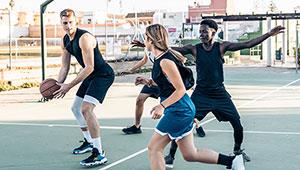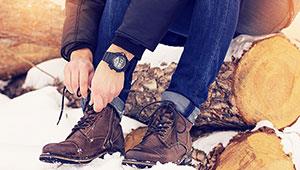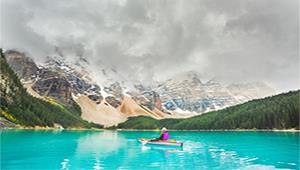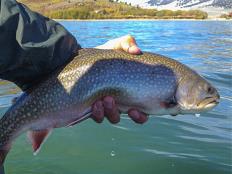
Fly fishing is a sport many outdoor enthusiasts enjoy, but it's not one that comes naturally to everyone. If you're just learning the art of how to fly fish, and want to improve before heading out with experienced fishermen, you'll want to heed these quick tips.
Know the Basic Terminology
When learning how to fly fish, it's important that you know what you're talking about. Whether you take a lesson, learn from friends, or read-up on the sport, you should know a few simple terms. Here's a simple breakdown of basic terminology.
- Rod: Not called a pole, but a rod in the fly fishing world.
- Butt: The bottom section of the rod where you hold on, this is the thickest part of the pole.
- Guides: These are the round metal loops that stick out of your rod and guide your lines.
- Reel seat: This is attached to the butt of your rod; it's where you slide your reel in.
- Creep: This is the method of letting the rod move forward without power, after you've completed your back cast, but before the unrolling back loop has straightened.
- Line hand: This hand anchors the fly lines, and modifies them during casting and fishing. Your opposite hand is the rod hand.
- Leader: This is made of clear plastic and attaches to your fly line at one end and your fly at the other end. It's made to be tapered, thicker at the bottom than the top, which gives the leader strength.
Know How to Assemble Your Equipment
Putting together your first fishing rod can seem daunting at first. With many pieces that all seem foreign, following a few simple steps can help.
- Use the terms above to locate and identify each part of your rod, which usually break down into anywhere from 2 to 5 pieces.
- Start at the tip, and start connecting the pieces from top down. Remember the tip will be at the top, and the butt--which is the thickest point--will be all the way at the bottom.
- You want your sections to be offset at a 45-degree angle so when you tighten each section it will all line up.
- Place the reel seat on the pole, opposite of your strong side. So, if you hold your pole with your right hand, place the reel on the left side. Click the reel into the seat to complete this step.
- Once the reel is set, screw down the reel lock to keep it in place.
Know How to String Your Rod
A poorly strung rod will not perform at its best, leaving you with more work and less success. Your rod will determine the type of line you need; check with the salesperson before purchasing anything.
To start, you'll want to double the string before looping it through your guides, making it less likely to slip out of your hand and back into the guide. Make sure to keep the line lubricated, and always be aware of keeping the line untangled. If this happens, back-cast a few times to get your lines back to normal. Even if you learn how to fly fish correctly, you're not going to catch a thing if you string your rod improperly.
Know How to Dress for the Sport
Now that you can talk the talk, you have to walk the walk, and that means dressing properly. Though it can get hot in the summer months, a tank top and shorts isn't appropriate for this sport. This is how you should dress:
- Always wear earth tones; fish can see very well and will scare easily if they see brightly-colored clothes in the water.
- Whether you wear a vest or not, be sure you have plenty of pockets. This will help keep your equipment and extra supplies organized.
- Always bring extra clothes--weather conditions can and will change.
- Waders keep you warm in cold weather and dry when you're fishing. Don't forget them.
Now that you know the lingo and proper dress code, it's time to get out with the experts, practice your cast, and learn how to fly fish.
 Buy your hunting and fishing license
Buy your hunting and fishing license





.jpg?height=174&mode=Thumbnail&width=234)


Discuss This Article